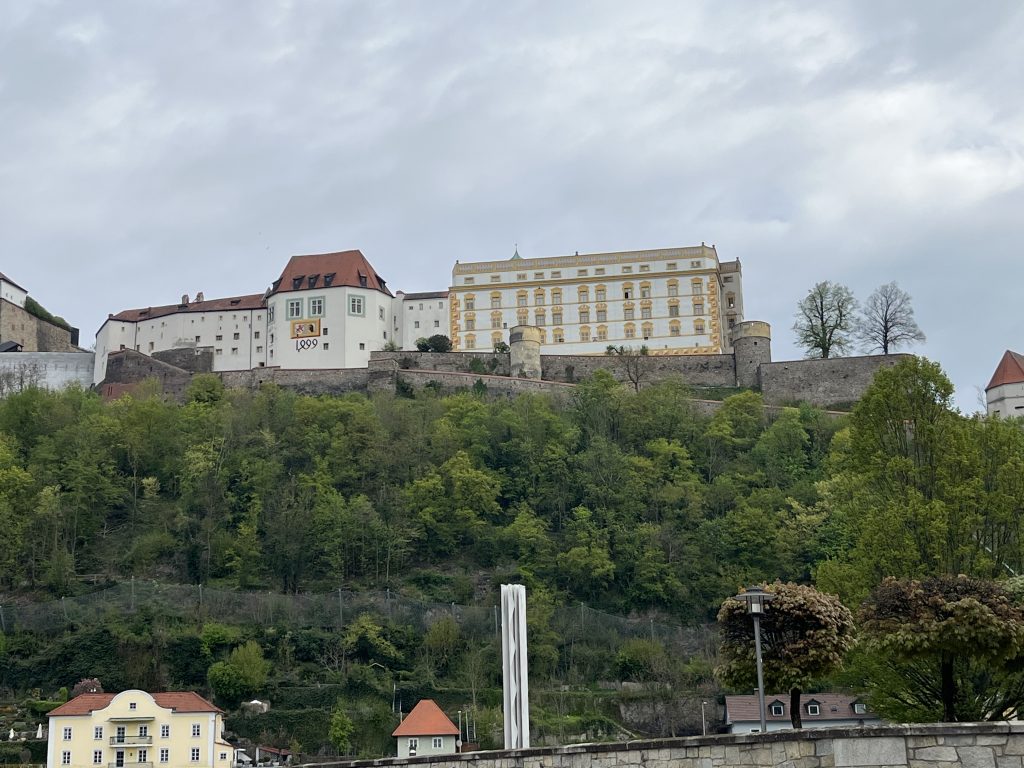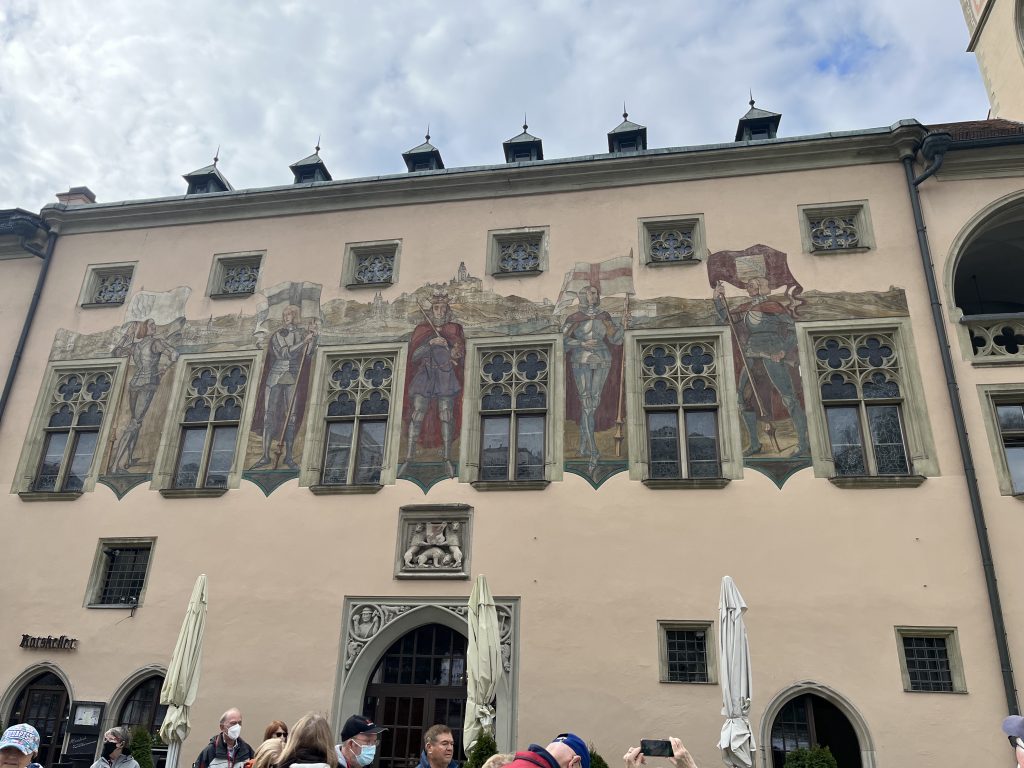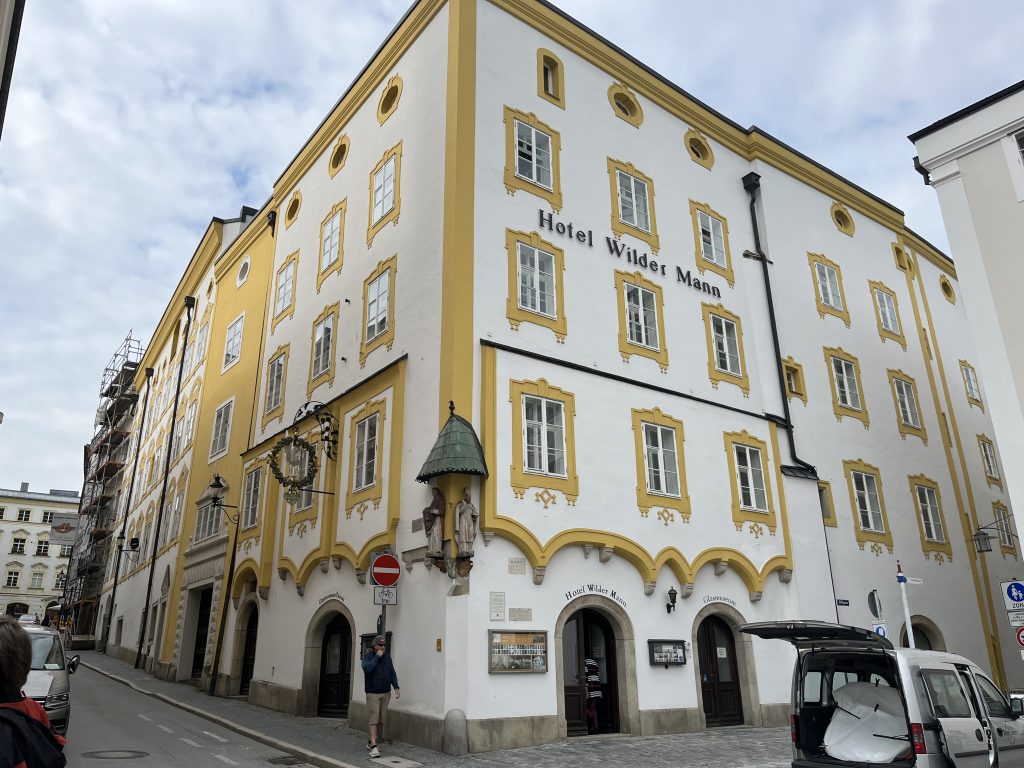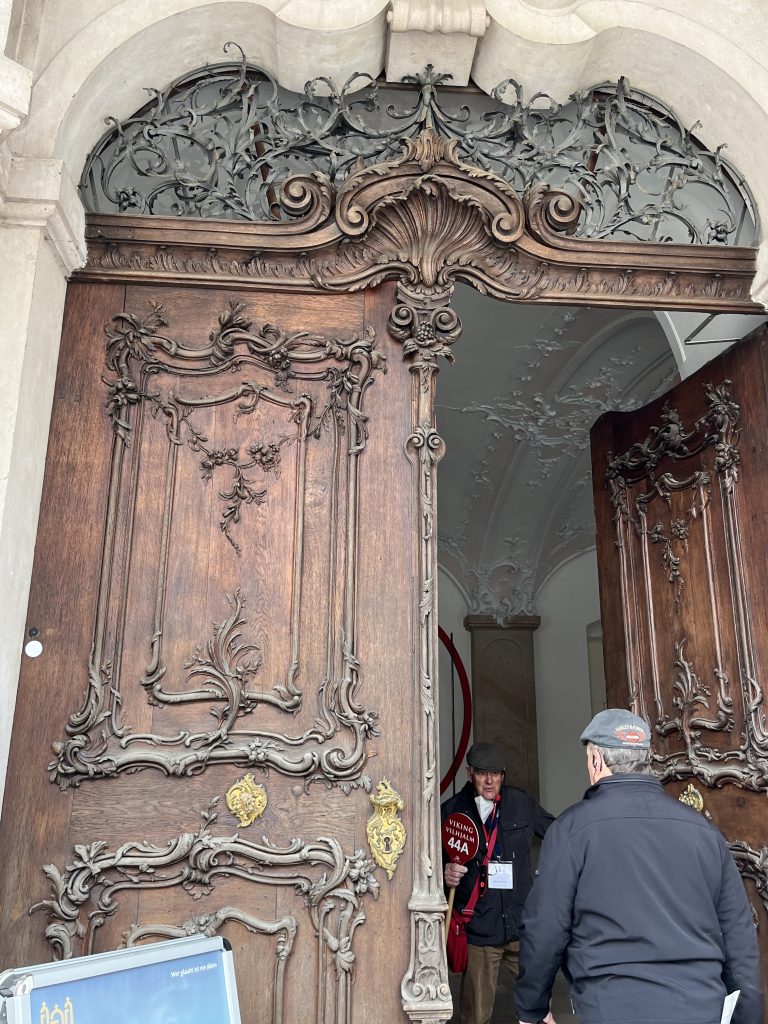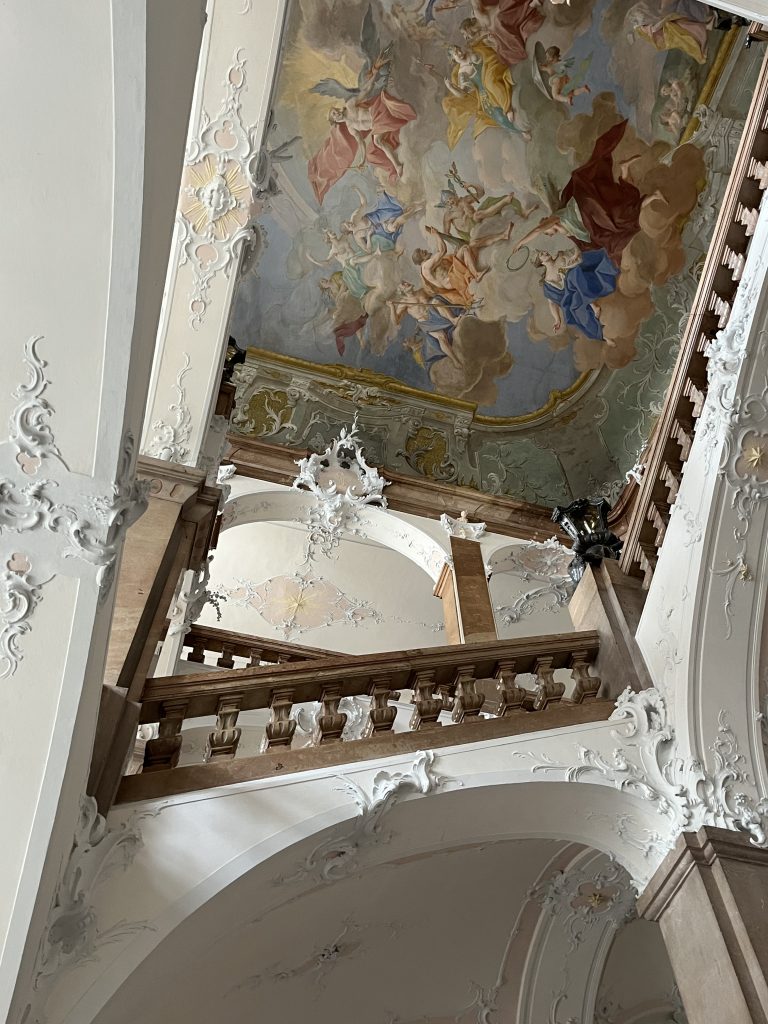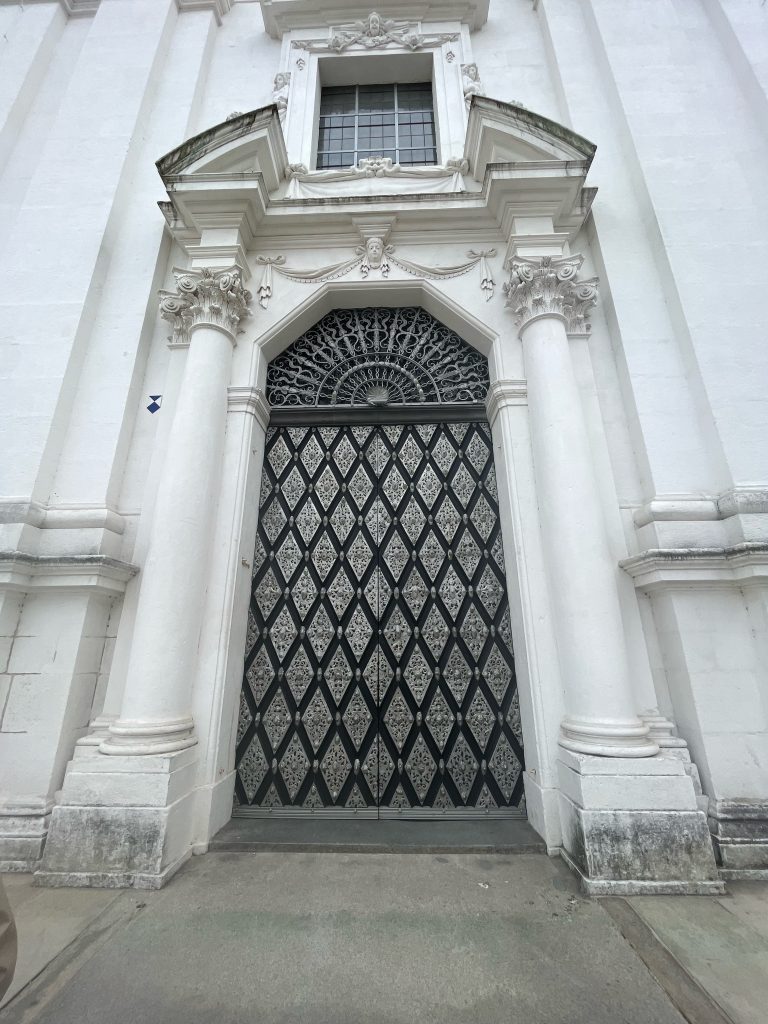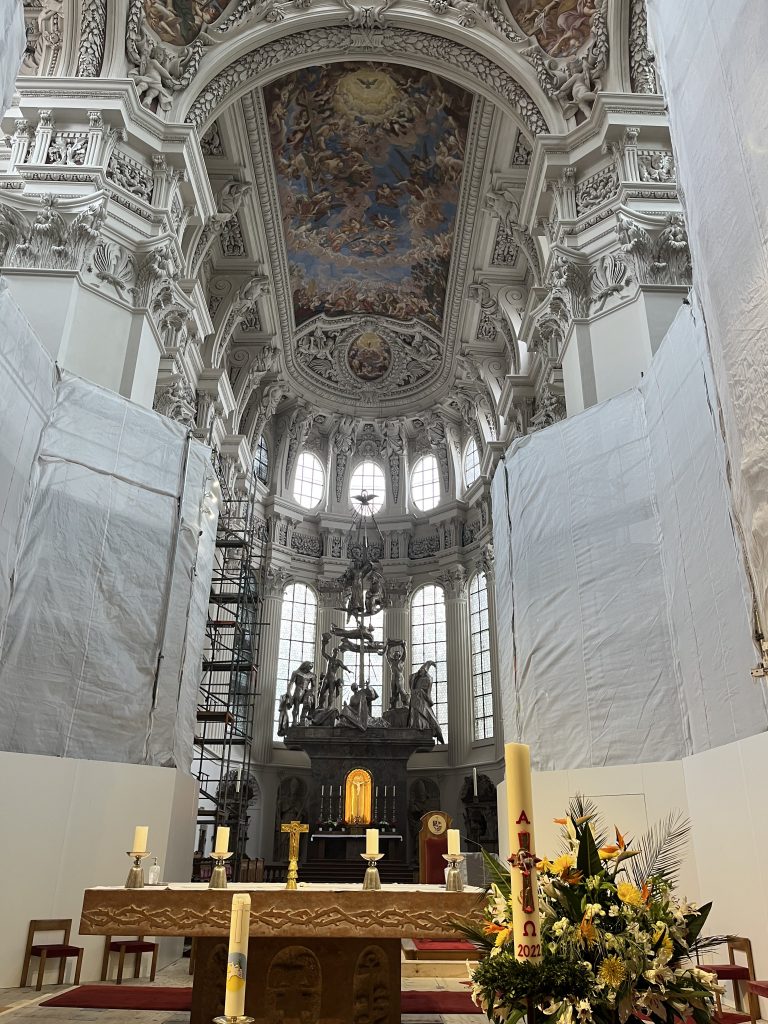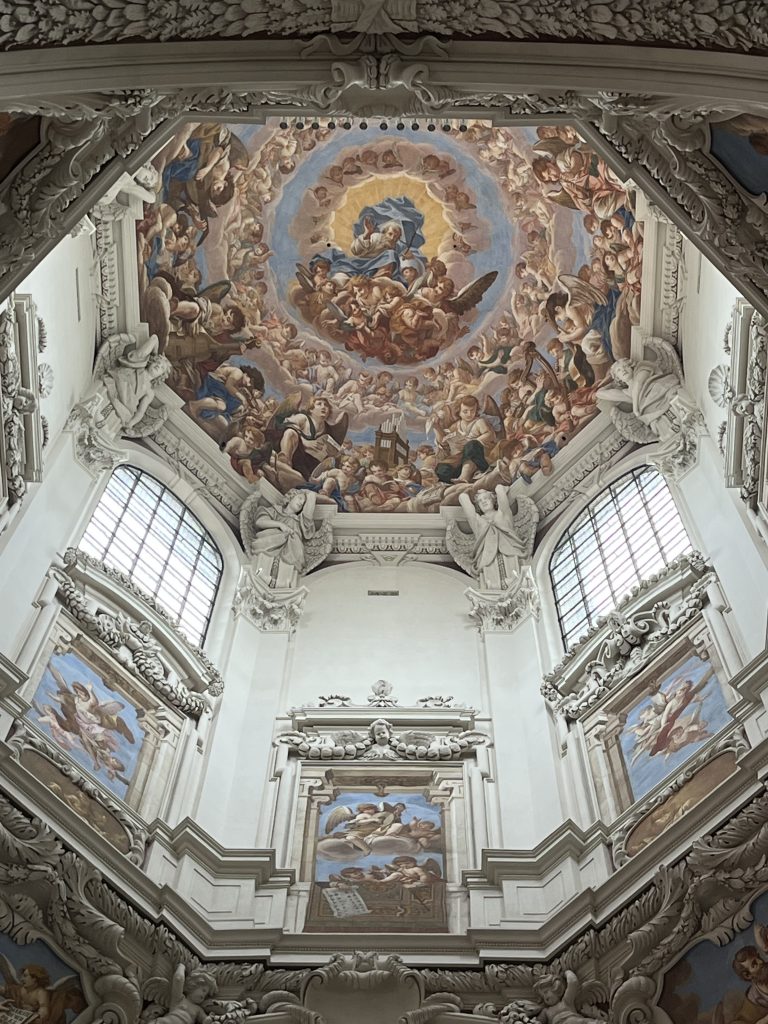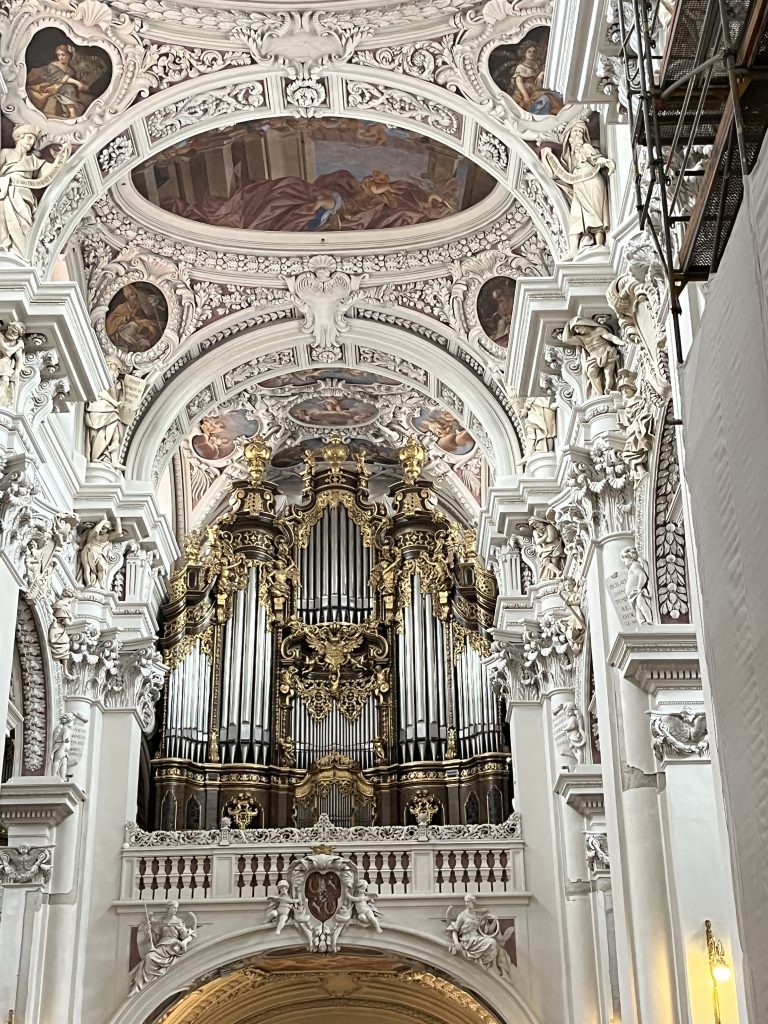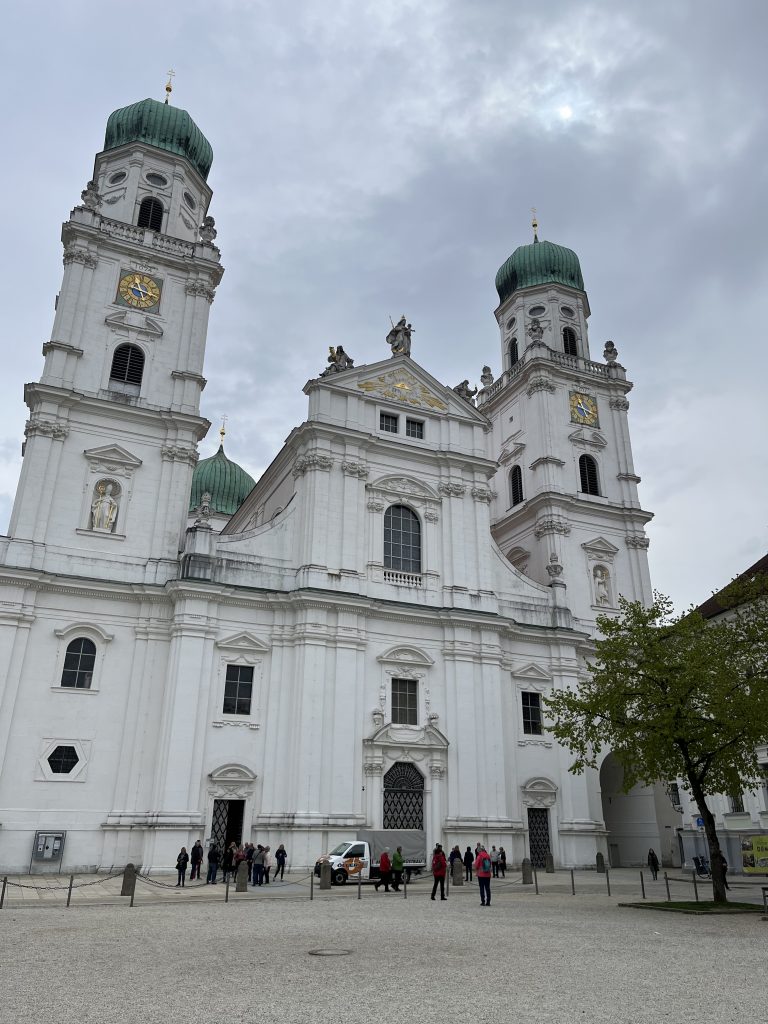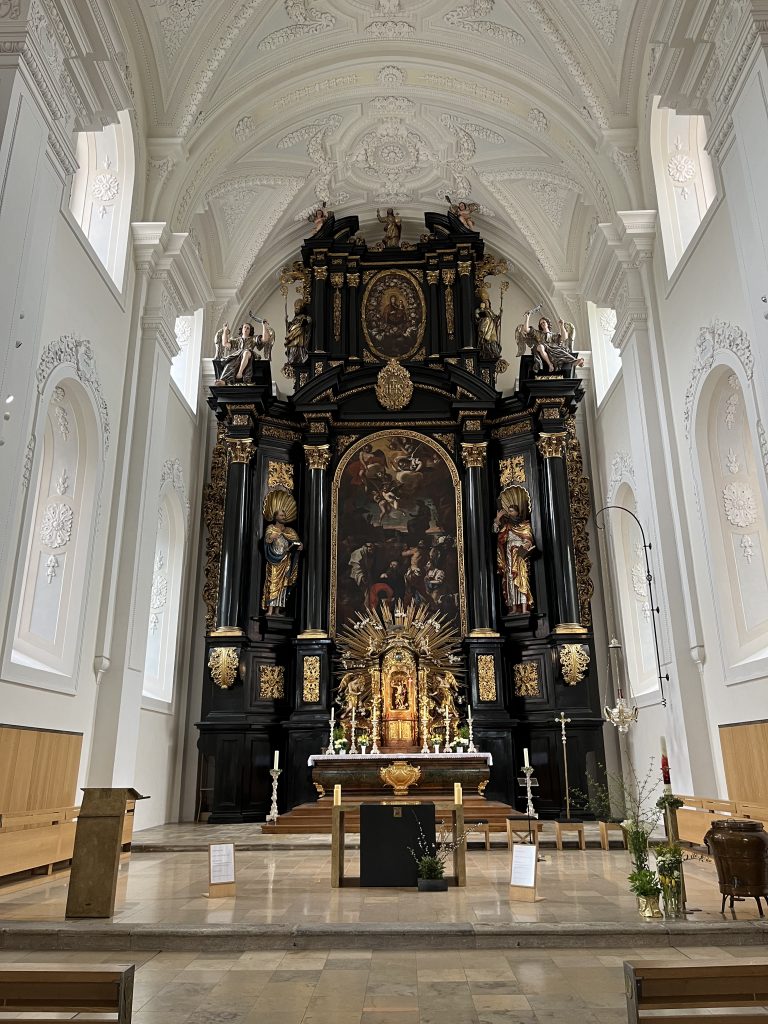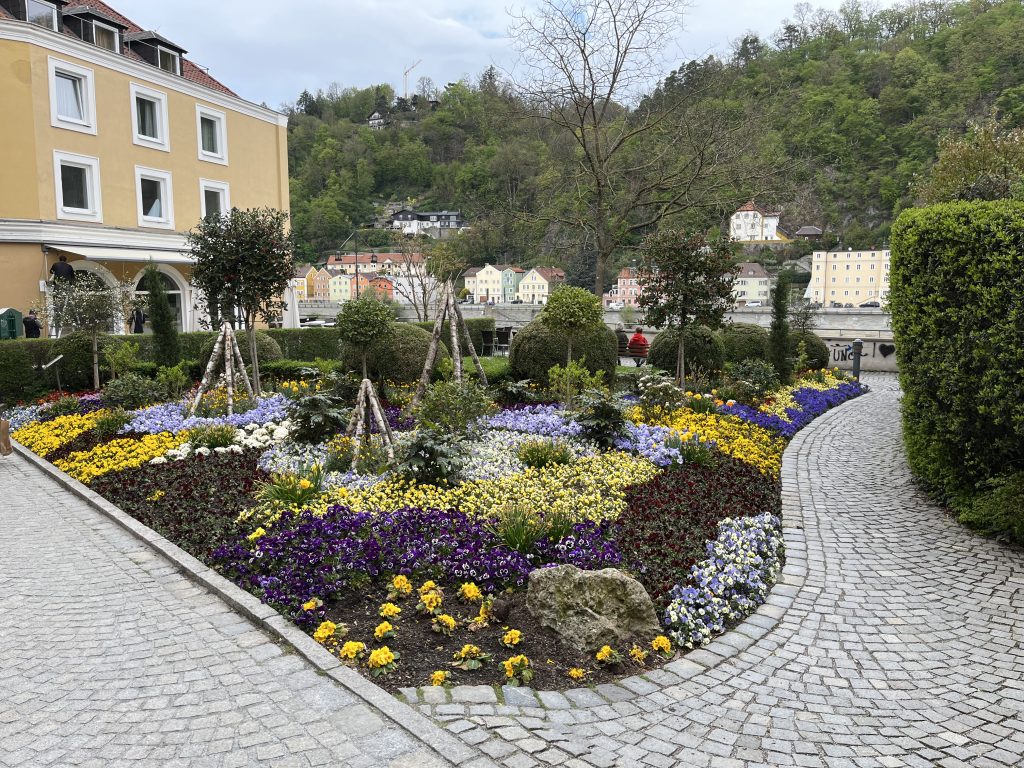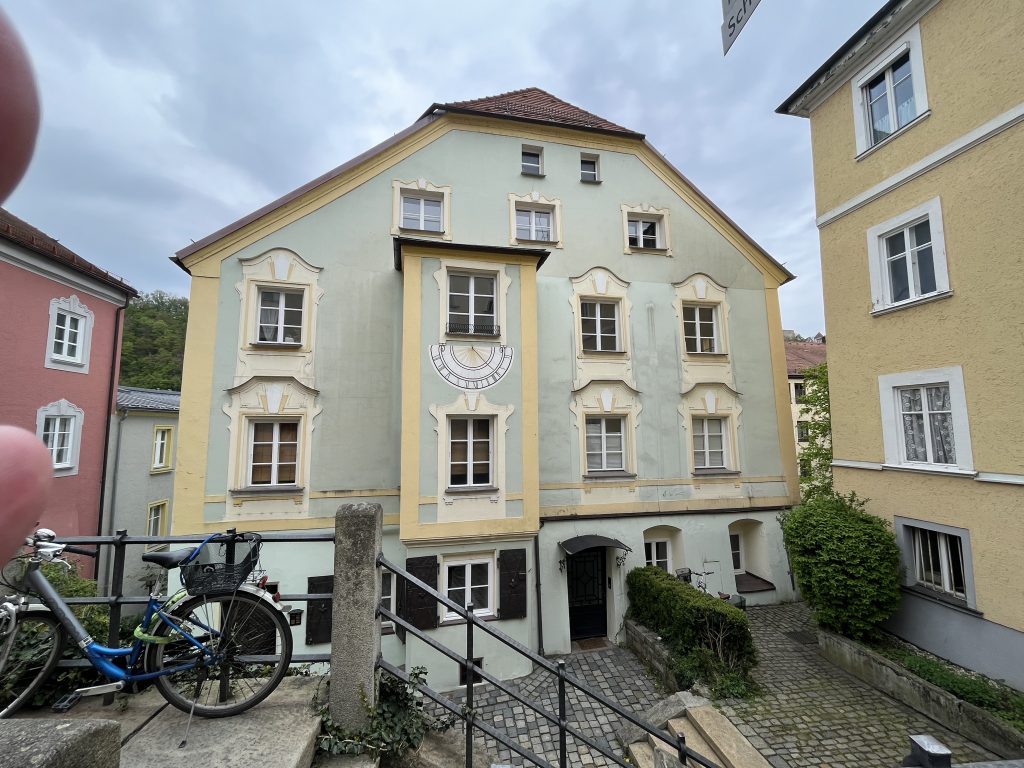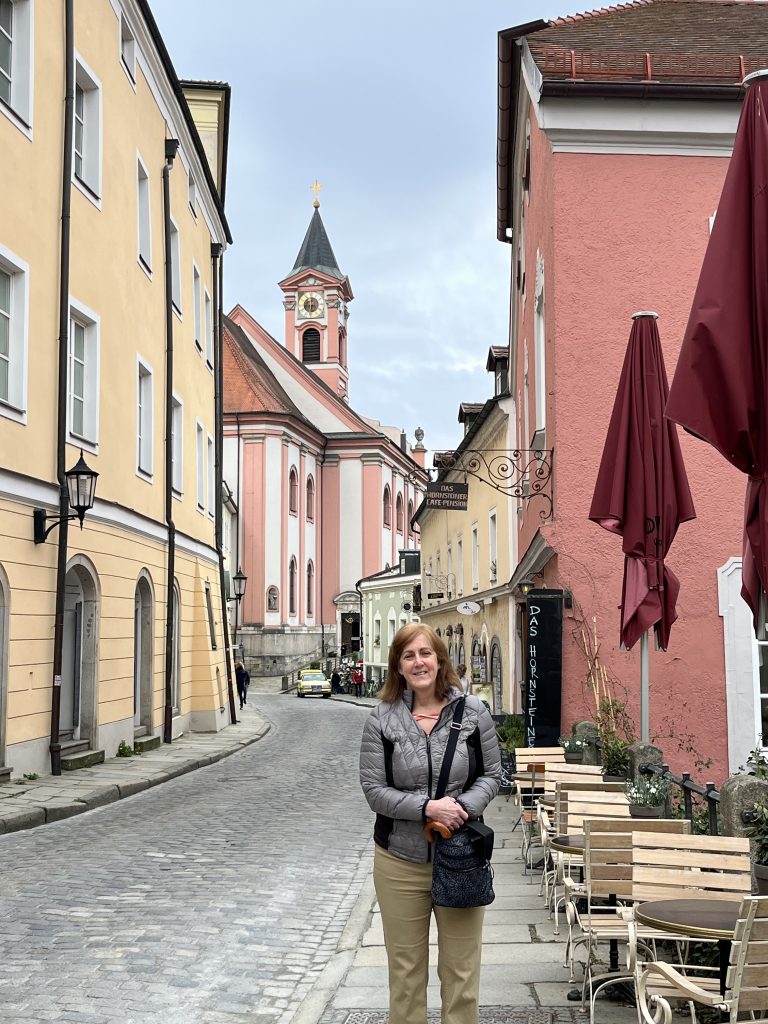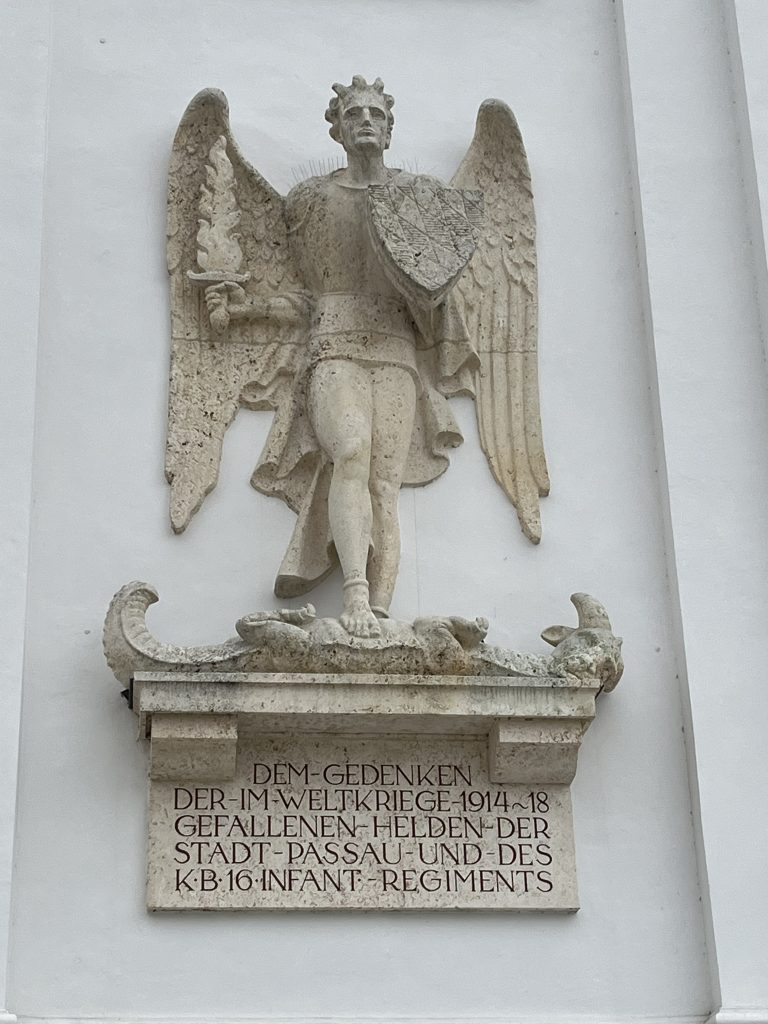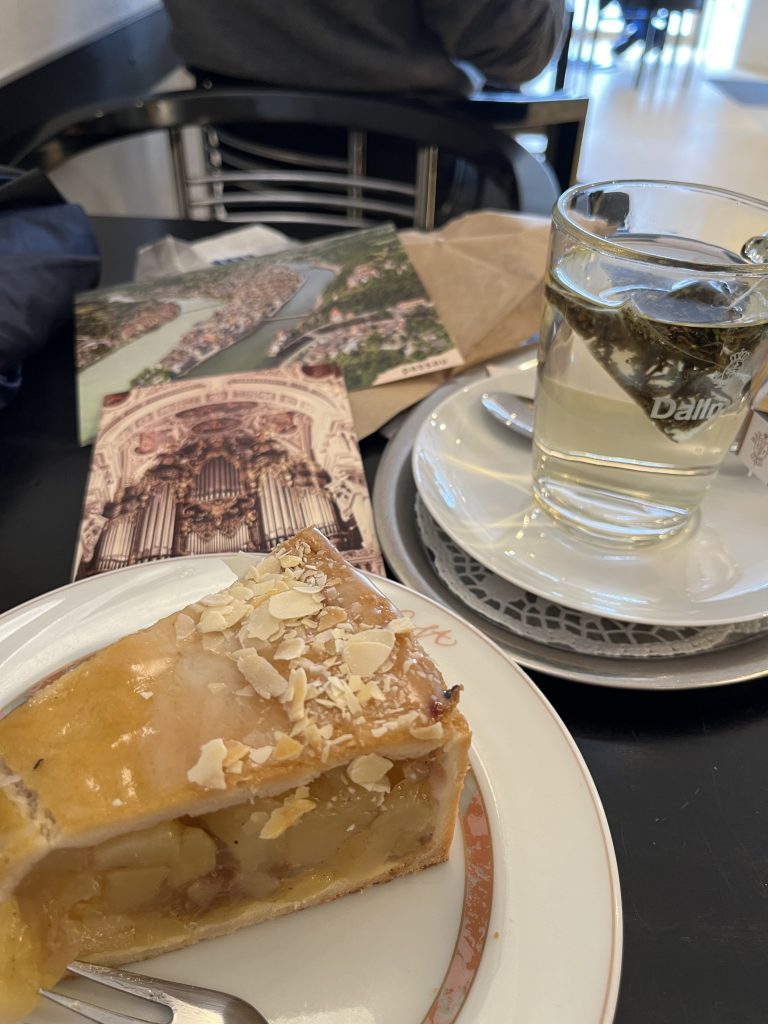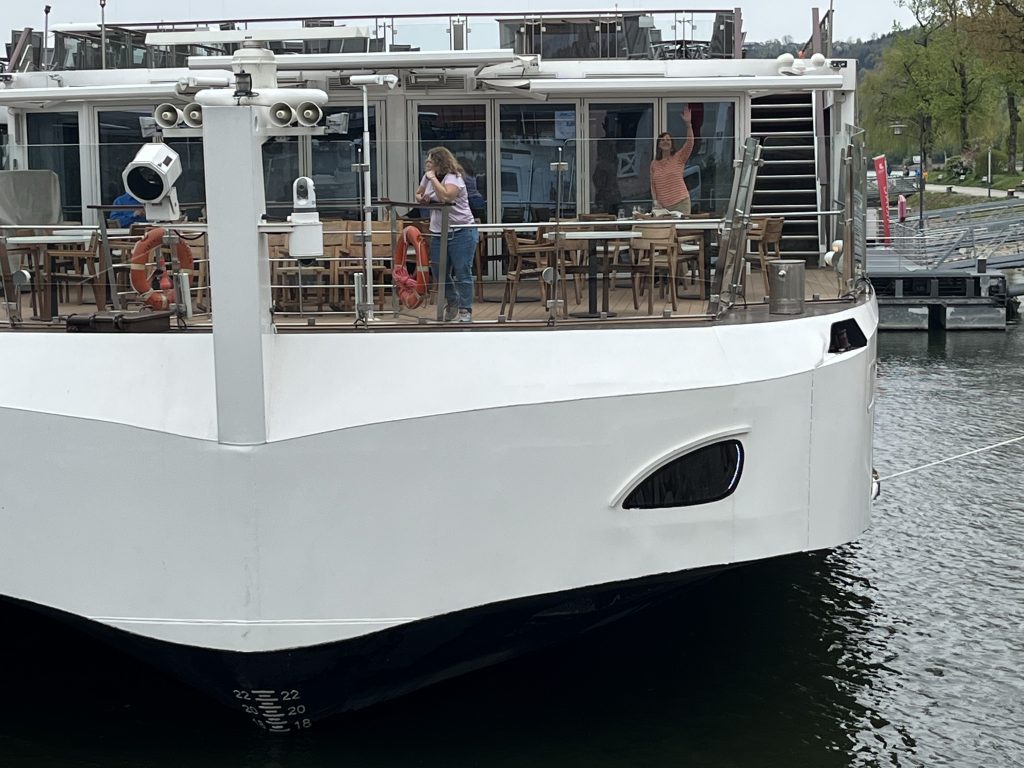Picture Gallery at the bottom of the Blog!
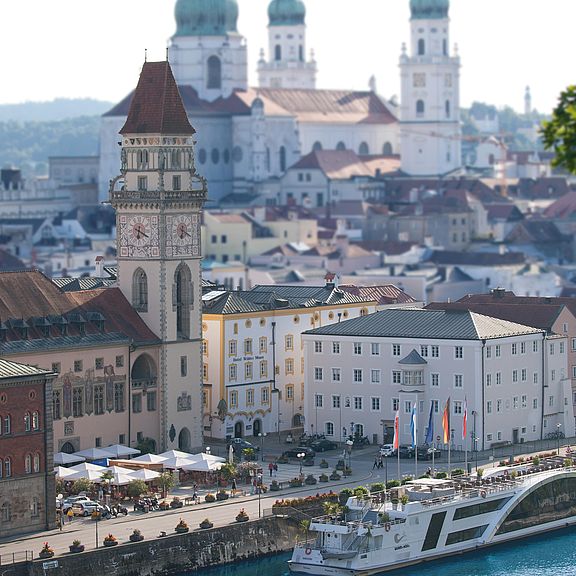
We woke up under the lee of a castle that dates to 1499. The bishop of the diocese of Passau – which included lesser cities like Vienna and Budapest down river – also became the prince, which seems to me to be a little too much for one person to do! I mean, really? When is it ever a good idea to hold both the temporal and spiritual power together? Somewhere I read something about how one cannot serve God and mammon. And there was a lot of mammon! Well, it was salt before it became money – white gold. Passau sits on a confluence of three rivers (Danube, Inn, and Ilz), like Pitttsburgh, and was the port where salt was transferred to horses who carried it from Bavaria (from places like Salzburg) up to Bohemia. The road they walked was called the “Golden Trail.”
The town is tiny – only 50,000 folks. Yet the cathedral of St. Stephen is the largest baroque church north of the Alps and boasts the largest church organ in the world with nearly 18,000 pipes. I looked to see if I could find the kapellmeister to ask if he’d loan WPC a mere 4,000 while ours are getting cleaned.
The baroque style developed during the Counter-Reformation period of the 1,600s as a response to Protestantism’s movement of stripping churches of ornamentation so that preaching, and the exposition of the Word would be center. One architectural aspect of this is a move was for Protestant churches to put pulpits in the front, rather than on the side of the churches. The baroque was an attempt to show the glories of heaven to the faithful on earth. It is helpful to put yourself in the uncomfortable shoes of a mediaeval peasant coming into from the country and encountering something as large as the Gottweig Abbey or as visually stunning at St Stephen’s. For my eyes, it is all a bit much. But still…!
Amy headed back to the ship while I ducked into a museum dedicated to Bohemian glass from 1650 -1950. The museum is housed in a lovely little yellow hotel across from the Rathaus. Only opened in 1985 (by the first man on the moon, Neil Armstrong!) it is 5 floors of glorious exhibits, each one seemingly more delightful to the eye then the last. It was magnificent and so unexpected.

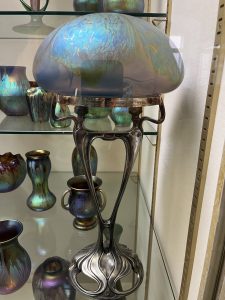
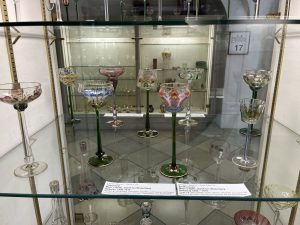
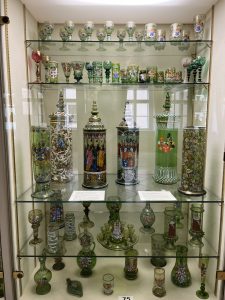
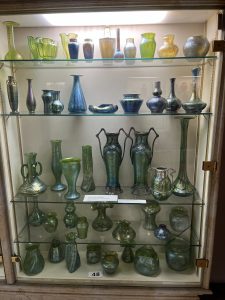

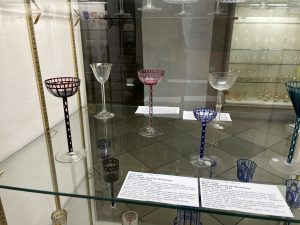
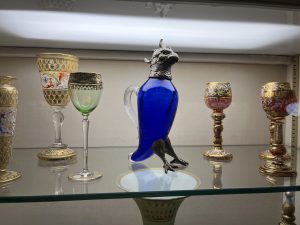
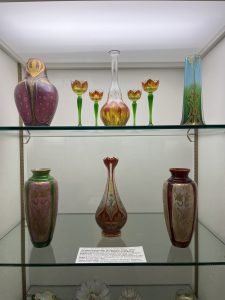
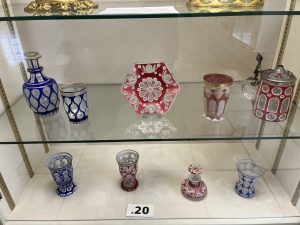
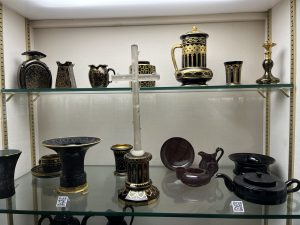
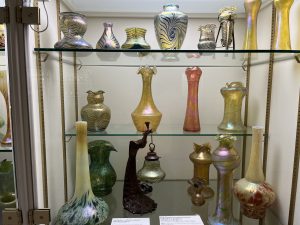
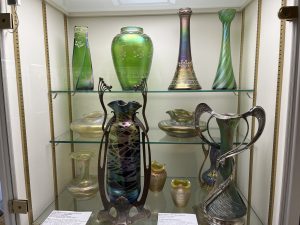
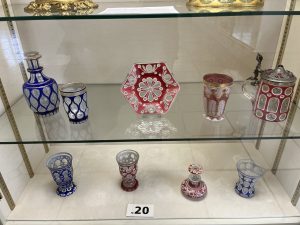

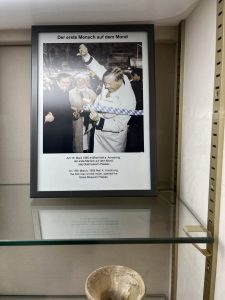
I returned to the ship tired and happy to see that Amy had claimed our favorite table at the front of the terrace allowing for al fresco dining, and was waving for me to join her. We have been very pleased with the tour and the “floating hotel” and will be disappointed to bid it adieu in the morning when we’ll transfer to a bus early for a 3+ hour drive to Prague.
Tonight, I’ve been reflecting on history. Passau is a beautiful city. But what has made it such a diamond was it was so poor after the war, out on the far edge of Bavaria, away from Munich, and untouched by bombs or shells, that people didn’t have money to improve their houses. Then, in the early 1970’s, the German government passed a law prohibiting anything to be done to homes past a certain age; in other words, pretty much the whole town is a historic preservation district. So its wealth back in the middle ages and early gothic period, followed by its poverty as it was eclipsed by cities that it used to rule, has made it stand now as a “quintessential German town.” But, there is also an ominous chart on the side of the Rauthaus showing how high flooding has come over the centuries. Starting in 1501 (the worst, but also without any modern advantages) all the way up to the devastating flood in 2013, our expert who gave a tremendous lecture on the Danube left us wondering what the future holds in the face of increased climate change.

